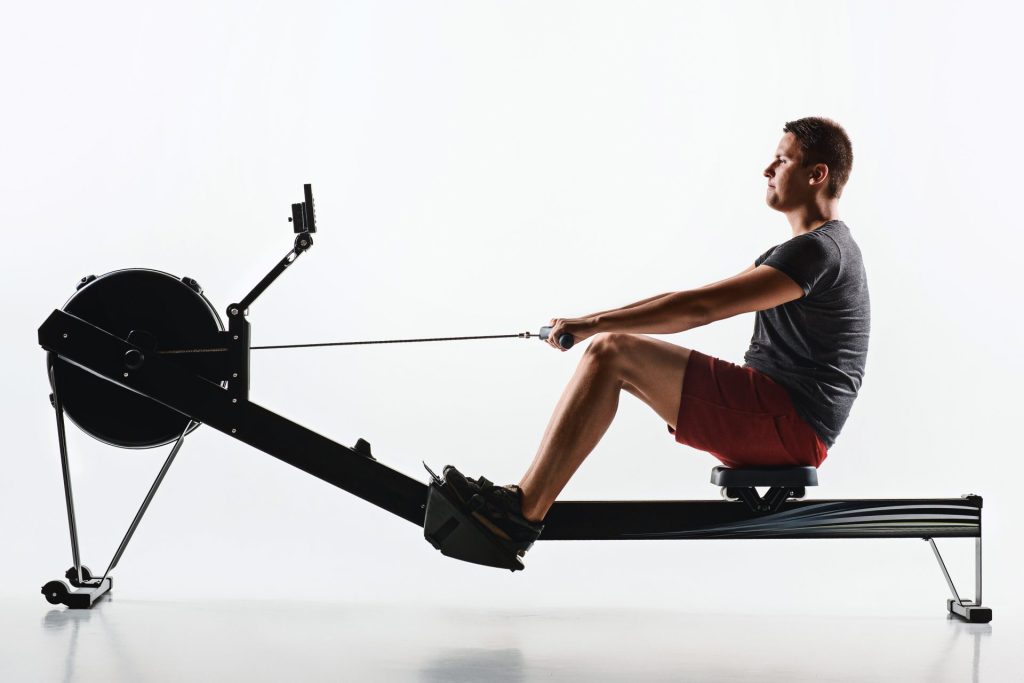A strong upper back is crucial for maintaining good posture, preventing injuries, and enhancing overall strength and stability. It helps counteract the effects of modern sedentary lifestyles and provides a solid foundation for various daily activities and exercises.
Working the upper back muscles offers numerous benefits, including improved posture, reduced risk of back pain and injuries, enhanced athletic performance, and a more balanced physique. It also promotes better shoulder health and contributes to overall upper-body strength.
This blog post will provide a comprehensive guide on how to work upper back. It will cover warm-up and stretching exercises, various strengthening exercises, proper technique and form, creating workout routines, supplementary exercises, injury prevention, and recovery tips.
Contents
Anatomy Of The Upper Back
The upper back, also known as the thoracic region, consists of several key muscles, including the rhomboids, trapezius, and posterior deltoids.
Understanding their functions and locations within the upper back is essential for targeted training. The rhomboids retract the scapulae, the trapezius provides shoulder stability, and the posterior deltoids assist in shoulder extension and external rotation. Understanding these muscles’ roles helps in selecting the appropriate exercises for comprehensive upper back development.
A weak upper back can lead to rounded shoulders, poor posture, neck and shoulder pain, and limited mobility.
It is important to address these issues to improve overall upper body strength and function.
Warm-up And Stretching
Warming up increases blood flow to the muscles, prepares them for exercise, and reduces the risk of injury. It also helps improve performance during the workout.
Dynamic movements like arm circles, shoulder rolls, and torso twists are effective for warming up the upper back. These exercises promote mobility and prepare the muscles for the upcoming workout.
Stretching exercises like the doorway stretch and cat-camel pose can help improve flexibility and mobility in the upper back. These stretches enhance the range of motion and prepare the muscles for a more intense workout.
How To Work The Upper Back
Pull-ups And Chin-ups
Pull-ups and chin-ups are highly effective compound exercises that target the upper back muscles. Using an overhead bar or assisted pull-up machine, grip the bar with your palms facing away from you and hands slightly wider than shoulder-width apart. Hang with your arms fully extended, then pull yourself up until your chin is above the bar. Lower yourself back down with control and repeat.
Bent-over rows
Bent-over rows primarily target the rhomboids, trapezius, and posterior deltoids. Hold a dumbbell in each hand with your palms facing your body. Bend forward at the hips while keeping your back straight. Pull the dumbbells toward your chest, squeezing your shoulder blades together. Slowly lower the weights and repeat for the desired number of repetitions.
Seated Cable Rows
Seated cable rows engage multiple upper back muscles. Sit on a rowing machine or cable machine with your feet resting against the footrests. Grab the handles with an overhand grip, keeping your back straight. Pull the handles toward your chest, squeezing your shoulder blades together. Slowly extend your arms and repeat the movement.
Lat Pull Downs
This exercise targets the large muscles in the back (latissimus dorsi) as well as strengthening the biceps and shoulders. Use a cable machine and grip the bar in an overhand position. Lean back slightly and pull the bar down towards your chest. Slowly release and repeat for 3 sets of 10-12 reps.
Supermans
Supermans are a great exercise for strengthening the lower back and upper back muscles. Lie facedown on a mat with your arms extended in front of you and legs straight. Lift your chest, arms, and legs off the ground simultaneously, squeezing your upper back muscles. Hold for a few seconds and lower back down. Repeat for several repetitions.
Common Mistakes To Avoid When Working The Upper Back
Neglecting Proper Warm-up And Stretching
One of the most common mistakes people make when working the upper back is skipping the warm-up and stretching routine. Neglecting to warm up the muscles and perform dynamic stretches can increase the risk of muscle strains or pulls. Spend a few minutes performing arm circles, shoulder rolls, and gentle stretches before beginning your upper back exercises.
Using Incorrect Form
Having the correct form is crucial when working the upper back. It’s important to maintain proper posture and alignment throughout each exercise. Avoid hunching your shoulders or rounding your back, as this can place unnecessary strain on the spine and lead to discomfort or injury. Engage the core and keep the shoulders down and back to ensure proper form and prevent any potential damage.
Focusing Only On Isolation Exercises
While isolation exercises like rows and pull-ups can be effective for strengthening the upper back, it’s essential to incorporate compound exercises as well. Compound exercises engage multiple muscle groups at once and promote functional movement patterns. Incorporate exercises such as deadlifts, squats, and push-ups into your routine to ensure balanced strength and mobility throughout the upper body.
Neglecting The Lower Traps And Rhomboids
Often, people tend to focus solely on the upper traps when working the upper back. While the upper traps are important, neglecting the lower traps and rhomboids can lead to muscle imbalances and postural issues.
Make sure to include exercises that target the lower traps and rhomboids, such as reverse flys or prone cobras, to promote optimal upper back strength and posture.
Overloading With Excessive Weight
Another common mistake is using excessive weight while performing upper back exercises. It’s crucial to start with a weight that allows proper form and technique. Using too much weight can compromise form and increase the risk of injury.
Gradually increase the weight as your strength and technique improve, but always prioritize form over weight for a safe and effective workout.
Ignoring The Importance Of Recovery
In their quest to strengthen the upper back, many individuals neglect the importance of proper recovery. Overtraining the upper back muscles can lead to fatigue, decreased performance, and even injury. Allow for adequate rest days between workouts and prioritize proper nutrition and sleep to support muscle recovery and growth.
Supplementary Exercises And Lifestyle Tips For How To Work Upper Back
Supplementary Exercises And Lifestyle Tips
Incorporating the right supplementary exercises and a healthy lifestyle is just as crucial in sculpting an impressive upper back. Yoga poses such as the cobra, upward-facing dog, and locust pose are beneficial in strengthening the upper back muscles.
Additionally, incorporating habits such as improved posture, correct sleep positions, and stretching before and after exercise are critical for maintaining good back health.
Cardio Exercises
For overall fitness, you need to include cardio exercises in your routine, such as running, cycling, and swimming. Cardio exercises help boost your heart rate, strengthen your lung capacity, and improve oxygen flow throughout the body, which, in turn, promotes muscle growth. Incorporating cardio into your daily routine also helps to burn excess fat and maintain overall fitness.
Healthy Diet And Lifestyle
Your workout efforts in the gym may be ineffective without maintaining a healthy diet and making lifestyle changes. Eating a balanced diet that’s high in protein, vitamins, and minerals is essential for muscle growth and overall health.
Inadequate sleep, high stress levels, and smoking are known to hinder the effectiveness of your workout routine. Incorporating meditation, getting adequate rest, and eliminating unhealthy behaviors can help to improve your overall lifestyle.
Yoga Poses For Upper Back Strength And Flexibility
Including yoga exercises into your upper back routine is essential for both strength and flexibility training. Yoga exercises improve balance, increase flexibility, and offer an ideal workout for your back.
Some of the best yoga poses for upper back strength include the seated twist, the eagle pose, and the fish pose, which help to stretch, tone, and strengthen your back muscles.
Injury Prevention And Recovery
Common upper back injuries can vary in severity, ranging from muscle strains to more serious conditions like herniated discs. Here are some common upper back injuries and some tips on how to prevent them:
Muscle Strains: Strained muscles in the upper back can result from overexertion, poor posture, or sudden movements. To prevent muscle strains:
- Maintain proper alignment of the spine while sitting, standing, and lifting heavy objects.
- Prior to any physical activity or exercise, perform a warm-up routine and gentle stretches to prepare your muscles.
- When lifting heavy objects, bend your knees and use your legs rather than straining your back.
Thoracic Sprain: This injury refers to the spraining of ligaments in the thoracic region of the spine. To prevent thoracic sprains:
- A strong core can help stabilize the spine and reduce the risk of sprains. Incorporate exercises like planks, bridges, and Pilates into your fitness routine.
- If you’re starting a new exercise program, gradually increase the intensity and duration to allow your body to adapt and avoid sudden strain on the upper back.
Herniated Disc: A herniated disc occurs when the soft inner portion of a spinal disc pushes through the tough outer layer. To prevent herniated discs:
- Always use your legs and avoid twisting motions when lifting heavy objects.
- Excess weight can put additional strain on the spine and increase the risk of disc herniation.
- Strengthening the muscles supporting the back and engaging in low-impact activities like swimming or walking can help support spinal health.
Postural Issues: Poor posture, especially with the increased use of computers and mobile devices, can lead to upper back pain and discomfort. To prevent postural issues:
- Ensure your workspace is set up ergonomically, with a supportive chair, proper desk height, and a computer monitor at eye level.
- Stand up, stretch, and change positions regularly if you have a sedentary job or spend a lot of time sitting.
- Strengthen your upper back muscles and stretch your chest muscles to improve posture. Exercises like rows, reverse flyes, and wall angels can be beneficial.
Remember, it’s important to consult with a healthcare professional if you experience persistent or severe upper back pain. They can provide an accurate diagnosis and recommend appropriate treatment or exercises based on your specific condition.
Conclusion
Working the upper back is crucial for a well-rounded fitness routine and overall health. We provided a comprehensive guide on how to work upper back, covering warm-up and stretching exercises, strengthening exercises, proper technique and form, creating workout routines, supplementary exercises, injury prevention, and recovery tips.
By incorporating these exercises and strategies into your fitness routine, you can develop a strong upper back, improve posture, reduce the risk of injuries, and enhance your overall strength and well-being.
Start working on your upper back today and reap the benefits of a stronger, more resilient body.





